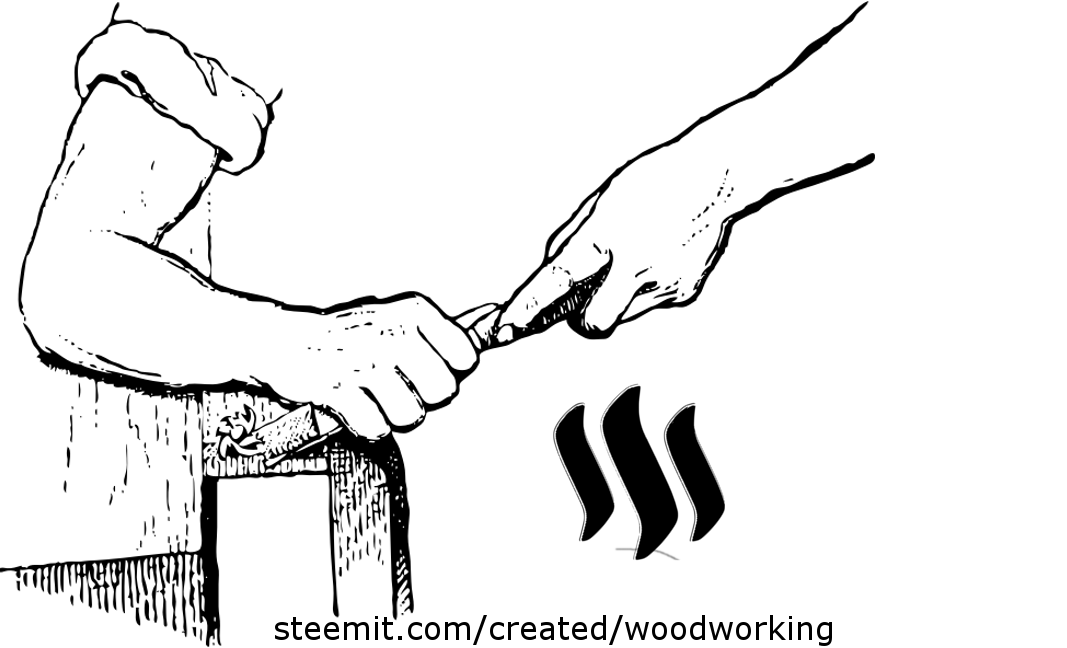Okay today I want to talk about something I normally have trouble with… Putting a price tag on my work. Now it’s a bit of a balancing act you don’t want to over charge the customer, but you also not want to short yourself for the work you have done. When it comes to woodworking projects take time, some take more than others. So the first thing is figuring out is, what your time is worth to you, but something that also needs to be factored in is skill. A master woodworker that’s been doing this all his life is probably going to be charging more than someone who has just started this hobby.

Another thing that you need to factor into your price is material cost. Most people only think about the cost of the wood, but this doesn't cover the cost of consumables. Like your sandpaper, nails, paints, sealers, ect. Over time these items get eaten up by projects, and need to be replaced. There are many different ways you can factor this in. You can do a percentage markup for the whole project ( Ex: you do the math, and your time and cost of wood and other material is $35. You tack a 15% markup for consumables), or you can just markup the cost of material ( Ex: Your wood cost $15 and you do the markup on only that, this would not include your time), or you can take the time to figure out what each consumable used on the project cost and tacked that on. There are many other ways you could do this.

I charge $20/hour for cnc time, and the cnc I use is pretty fast (It takes about 20-30 min to do the stitch, and I charge a minimum of 30min or $10),and I charge $10/hour on the finishing work (Sanding, spraying and staining and painting). Then I charge for my material costs (wood, glass, metal) with a minimum cost of $10. I factor costs of consumables as a 10-15% markup on cost of material. Example you have $20 worth of material, I'm normally going to charge an extra $2 (10%). The higher 15% is for projects that have more detail, more colors, just more finishing work.
This is how I personally price my work, and I’m not saying my work sells better than someone else’s work would with a different pay model. This is just an idea for those who might be starting out and trying to get a gauge of how to price their work. Also these are my rates. You might say that $10 is to low for, well then charge more. I set these rates based on my skills and capabilities, so what you can differs from me. Over the next few years as I learn more these rates will go up.
That’s all I have for you today. If you enjoyed this most please upvote and resteem. If you have another business model please share in the comments below, or come join me and others on our woodworking discord https://discord.gg/azrCDrH. We have discussions on woodworking almost daily.

There are many formulas out there....here is one that works for me. Never be afraid to charge what you are worth. I have seen a higher prices item sell before the same one at a lower price......
HERE ARE SOME FORMULAS THAT HAVE WORKED IN THE PAST FOR FINDING A FAIR MARKET PRICE IN MY CRAFT ECONOMY.
Cost of Supplies + $10 per Hour Time Spent = Price A.
Cost of Supplies x 3 = Price B.
Price A + Price B divided by 2 (to get the average between these two prices) = Price C.
Compare Price C to your Market Research and adjust accordingly.
For example, it takes me 2 hours to spin $20 worth of fiber into yarn. $20 Fiber + $20 Time = $40 (Price A). $20 Fiber x 3 = $60 (Price B). $40 + $60 = $100. Divided by 2 = $50 (Price C)
$50 should be in the range of the fair market price for my item. If $50 is too high, I’m either spending too much on supplies or I may work slower than other crafters. If $50 is too low, I may work faster than other crafters, or I got a great deal on my supplies and should raise my price a bit to have a fair market price and support the other artisans in my field.
Downvoting a post can decrease pending rewards and make it less visible. Common reasons:
Submit
This is another good system of pricing your work. Thank you very much for the comment.
Downvoting a post can decrease pending rewards and make it less visible. Common reasons:
Submit
It really is a tricky subject and you have a really good formula there. I have used a similar formula over the years and adapted it to suit different projects and commissions. Great post.
Downvoting a post can decrease pending rewards and make it less visible. Common reasons:
Submit
You can read about us here
Downvoting a post can decrease pending rewards and make it less visible. Common reasons:
Submit